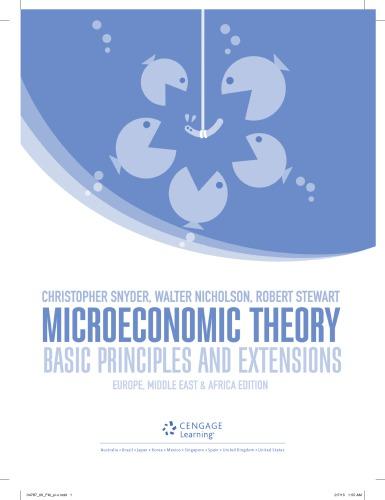11.8 The Ramsey formula for optimal taxation The development of optimal tax policy has been a major...
Question:
11.8 The Ramsey formula for optimal taxation The development of optimal tax policy has been a major topic in public finance for centuries.17 Probably the most famous result in the theory of optimal taxation is due to the English economist Frank Ramsey, who conceptualised the problem as how to structure a tax system that would collect a given amount of revenues with the minimal deadweight loss.18 Specifically, suppose there are n goods (xi with prices pi) to be taxed with a sequence of ad valorem taxes whose rates are given by ti (i = 1, n). Therefore, total tax revenue is given by T = an i=1 ti pi xi. Ramsey’s problem is for a fixed T to choose tax rates that will minimise total deadweight loss DW = an i=1 DW
(ti
).
a.
Use the Lagrange multiplier method to show that the solution to Ramsey’s problem requires ti = λ(1/eS − 1/eD), where λ is the Lagrange multiplier for the tax constraint.
b.
c.
Interpret the Ramsey result intuitively.
Describe some shortcomings of the Ramsey approach to optimal taxation.
Step by Step Answer:

Microeconomic Theory Basic Principles And Extensions
ISBN: 9781473729483
1st Edition
Authors: Christopher M Snyder, Walter Nicholson, Robert B Stewart






